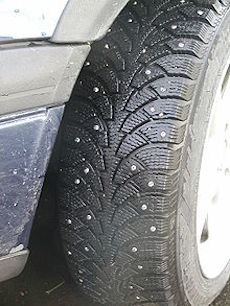
A hot and satisfying Jan. 20 party in the northern Berkshires
On the evening of Inauguration Day, Jan. 20, a score of revelers gathered in a field in the northern Berkshires to bid farewell to Donald Trump in a time-honored way, by burning him in effigy.
Head of Trump effigy
— Photo by Ann McCallum
Williamstown architects Andrus Burr and Ann McCallum fashioned a seven-foot-tall figure of the Apricot Toddler.
Trump effigy
— Photo by Ann McCallum
Sharing hot toddies and welcoming the local fire marshal around their bonfire, the group read aloud the names of the 147 members of the U.S. House who had voted not to accept the election results.
— Photo by Ann McCallum
Like the bonfires lit across Britain after the defeat of the Spanish Armada or Queen Elizabeth II’s Jubilee, or just simply to exorcise a demon, the Trump burning was both cathartic and warming.
— Photo by Cleo Levin
William Morgan is a Providence-based art historian and writer.
The Silver Age
Looking across the head of Narragansett Bay to Providence from the East Providence shoreline.
— Photo by William Morgan
William Morgan: A plea for snow tires
If we Rhode Islanders are the nation's worst drivers, then it figures that a snowstorm makes matters worse. Given the Little Rhody driver's reputation for aggressiveness, failure to acknowledge such basic guideposts as traffic lights, stop signs, or courtesy, winter conditions will only greatly magnify the legalized game of chicken that is driving in the Ocean State.
Given the attitude with which Rhode Islanders fling their cars around, it seems unlikely that we might consider serious drivers training, one that would include time on a skid pad. Scandinavian countries, for example, prudently require an extensive road test in snow and on ice.
Even if drivers in such places as Sweden and Finland are better trained to deal with winter, the Nordic countries require all cars to be shod with snow tires. You might think there are a lot of four-wheel-drive vehicles just south of the Arctic Circle, yet Oslo and Stockholm have mostly regular cars, including a lot of rear-wheel-drive ones, that get about fine with snow treads at all four corners.
Snow tires may seem like a quaint relic of the past. But if you look in old photo albums of Christmases past, you may see your parents and grandparents standing by cars with those knobby tires that actually got them places. Or take a look at Yankee Magazine, say, which often features nostalgic photos of New England villages in the snow where the cars don't seem to be spinning wildly out of control or blocking school buses filled with children. (Our forebears also had other advantages, such as standard transmissions, less powerful machines, and perhaps a more realistic understanding of a car's limitations.)
In the past quarter century all-season tires replaced snow tires. These are actually only three-season tires, despite manufacturers' putative claims. The argument was that snow tires were noisy on the highway, and besides, who wanted the inconvenience of swapping tires twice a year—sort of like changing those cumbersome old wooden storm windows. The result has been a dangerously false sense of confidence in year-round tires, which simply do not get you through snow as well as tires specifically designed for the job.
The other problem with modern tires is their width. Look again at those images of Grandfather driving the Ford Woody up College Hill, in Providence, or at cars competing in winter rallies in Canada or the Pyrenees: They are riding on relatively narrow tires. A fat wide tire may look cool, and it is perfect for peeling out of the Dairy Queen parking lot on a hot summer's night, but it performs poorly in rain, snow, or ice. Like a cross-country ski or an ice skate, a tire needs be skinny and offer as little resistance as possible.
Which brings us to the irony of the all-wheel-drive car or the SUV. Macho looking but fat tires offset the additional traction provided by four-wheel drive. Worse, buyers of SUVs have an over-inflated belief about their vehicles' bad weather driving abilities: Big-soled shoes and the application of far too much horsepower are likely to increase skids and lessen surefootedness.
The modern car may have seat belts, air bags and sophisticated navigational equipment, but the most important safety device is still a good driver. Use the excuse of coming global warming to put off buying snow tires, if you must. Yet there are still a few tips—dare not call them rules --that might help us get about if more snow comes.
Driving a Range Rover, a Cadillac Escalade, or a Porsche Cayenne may stroke your Indiana Jones fantasies, but it does not make you a better driver.
Setting out in any kind of car without first cleaning all the windows makes you a dumb driver.
Keep your gas tank full. Abandoning your car on the interstate because you forgot to top up is both needless and very dumb.
A light touch on the accelerator is always best. A powerful engine may fuel your testosterone level, but on snow and ice more power means less control.
From a practical point, fewer spinouts and fender-benders may keep winter traffic flowing a bit more smoothly. So, if we cannot put our in-your-face driving manners on hold for the winter, perhaps we can replace the metaphor of the driver as bruising defensive lineman with that of a graceful cross-country skier.
William Morgan is a Providence-based author and architectural historian. A version of this piece appeared in The Providence Journal in January 2008





